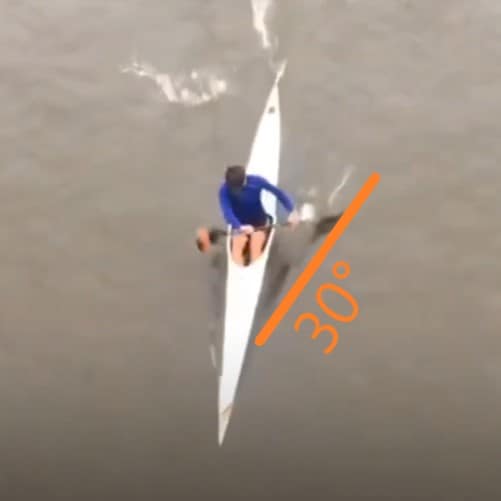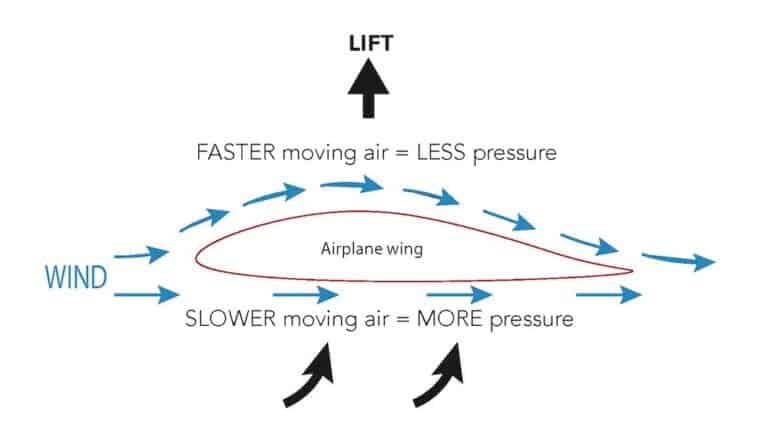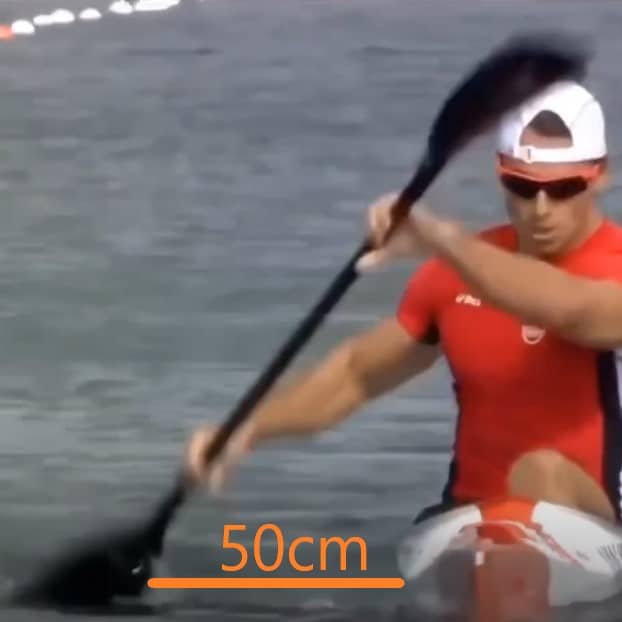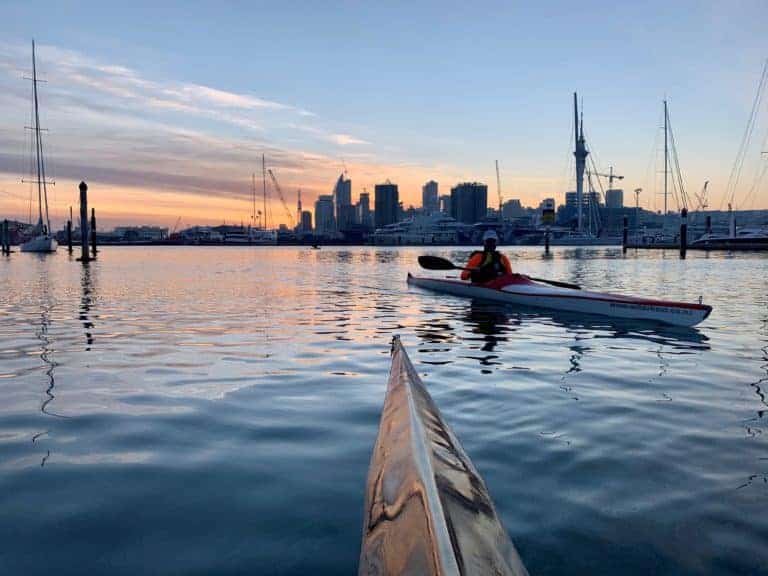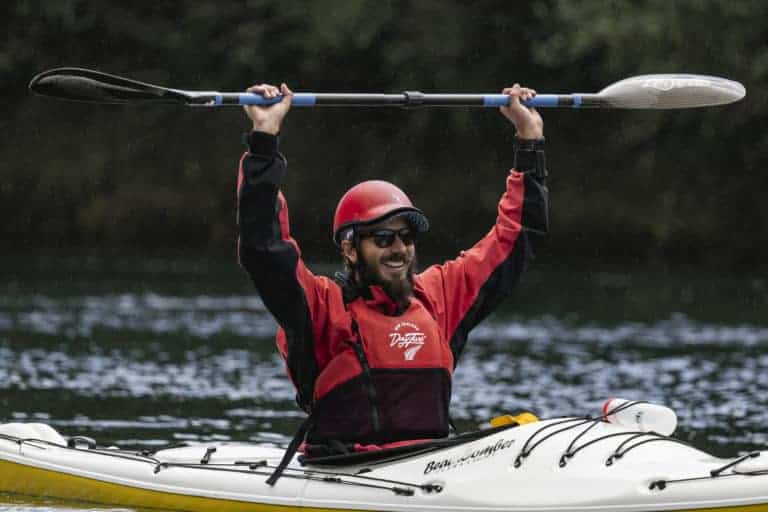- Overview
- Itinerary
- Gallery
- FAQ
- Enquiry
Long boat instructors and wing blade specialists.
Duration: 2hrs
Master the forward stroke to paddle faster and kayak longer.
Wing paddles are designed to make multisport kayakers faster if they have the correct paddle technique. Knowing how to correctly do the multisport wing paddle technique will give any paddler impressive gains and style points.
Multisport wing paddle technique is a specialized approach used in various water sports, including kayaking, stand-up paddleboarding (SUP), and dragon boating, among others. This technique maximizes efficiency, power, and control by optimizing the use of a wing-shaped paddle.
During the forward stroke, the pushing hand plays a crucial role. As the wing paddle enters the water, the pushing hand does not push or punch forwards - a multisport wing paddle technique misconception - it actually arcs sideways; the very essence of engaging the wing blade mechanics. Throughout the forward stroke, the top hand remains elevated, transitioning from a position near the forehead until the top arm elbow crosses your centre line (or down by your chin). This high hand position ensures better leverage and power generation.
Hip and torso rotation are key components of the multisport wing paddle technique. By engaging the core muscles and rotating the body, this movement allows for an efficient transfer of power and aids in maintaining balance and stability.
The bottom pulling hand, starts close to the boat and gradually moves backward and outward as it propels the blade through the water. The pulling motion is synchronized with the pushing hand, creating a fluid and powerful multisport wing paddle stroke.
To assess and refine the multisport wing paddle technique, SNM often use video analysis. By examining footage captured from a front-facing camera angle, SNM can draw the hand path on the screen. A correct technique results in two parallel lines aligned with the water's surface, indicating optimal hand movement.
Why is the forward stroke so important?
If you have read our KAYAK WING PADDLE BLADE article, you might be familiar with the following wing blade facts:
The forward momentum you gain with a kayak wing paddle blade adds at least 4% to your performance gains (depending on who you ask and what research you find). 4% is relatively minor, but on the coast to coast kayak stage; we take roughly 70km of river and a 5hr time, minus 4%, then you effectively paddle 67.2km for 4hrs and 48mins (saving 2.8km and 12mins). All the small gains and percentages add up over a 11+hr multisport race! Our clients know so and think so!
Multisport Wing Paddle Technique
Join SNM for an enlightening and engaging kayak session starting on land with what the paddle and blades do, the variations of wing blades and the science of functionality.
We then progress onto the water, first showing how the wing blade technique looks, having a dialogue around what we did and saw, then trying the wing paddle out with some constructive feedback. We then take you through some kayak drills and skills to enhance what you know, take you further, faster and try out all the variations to the forward stroke and wing paddle technique.
Expert wing paddle coaching
Join the SNM team of qualified kayak instructors, Coast to Coast kayak stage endorsed, experienced paddlers and active in the kayak community.
Go next-level wing paddling...
Join the SNM team for a Moving Water Workshop to master the currents and boat control.
Other wing paddle topics we will cover:
Three-dimensional moving planes: sagittal (forwards and backwards), transverse (rotational) and frontal/coronal (sideways).
Three-axes kayak movements: pitch/bounce (bow up & down), yaw/snaking (bow sideways left & right) and roll (rocking).
Ten commandments of Kayaking:
- The paddle shaft should always be bent
- Early body rotation
- Lock the blade 'in a pool of molasses'
- Body weight onto the paddle
- Hip support stroke recovery
- Connecting shoulders and hips
- Minimise 'air-time'
- Suspended bungee cords (Pinocchio)
- Walk on water
- There is no waterfall!
Structural and technical concepts:
- Leaning the boat to the stroke-side
- Earlier leg movements
- Twisting the boat
- Using the waterwall as a RipStik
- Visualising the V's
- Breathing techniques
- Cadence and stroke rate
Duration: 2hrs
Itineraries
Set up
Here we focus on body composition and good postural integrity.
Catch
Both arms push the paddle down into the water ("spear the fish"). Top hand comes forward a little. Insert the blade as close to the side of the boat as possible and as far forwards as the feet.
Pull / power phase
Emphasise power from the torso and not the arms. Imagine the arms are locked and only bent 10 degrees. Twist the torso and throw the paddle sideways as you pull on it.
Leg drive
Pump the bicycle legs! The stroke that is in the water is the same side leg that you push on.
Finish
Once the paddle is at the hips and 50cm from your boat you are done.
Exit
Exit sideways and up, empasising the new paddle blade set up and catch, releasing tension on the submerged blade.
Air time
Between strokes, you transition from an exit to a catch, where the paddle and blades are all in the air essentially doing nothing. Minimise that amount of time and focus on good body work.
The wing paddle forward stroke can give you a 4% advantage of speed.
The benefits of a wing paddle you gain by forward stroking for 1 hour will save you 2.4 minutes.
Wing paddle technique through water means strokes enter close to the boat, at your feet, then pulled diagonally towards the stern, moving away from the boat. The blade should move in a straight line from entry to exit (this line is about 30 degrees relative to your boat).
There are several stages to the wing paddle technique. First the set up. Second the paddle catch. Third the drive phase (pull & twist). Last the clean exit.
Paddle technique is a way in which one uses the body and the tool. The paddle technique was developed before the wing paddle itself. Wing paddling technique is based on two of the three fundamental body movements. Non-locomotor movement where the body is anchored to the kayak moving about the body's axis or the spine and combined with manipulative movements that involve the use of a body part like hands to move or manipulate a paddle.
Wing paddles and flat paddles are the two types of paddle blades with variations of low and high-angle paddle techniques.
Paddle feather angle is also known as offset; which is the difference in angle between your two paddle blades. Most paddlers have their blade angles between 45-60 degrees.
The wing paddle blade is literally shaped like an airplane wing providing “lift” when paddled correctly which increases efficiency by 4%
The wing profile works by creating “lift” when it moves sideways through the water; propelling you forward. The same way an aeroplane's wings create lift when it moves forward through the air, lifting you up.

